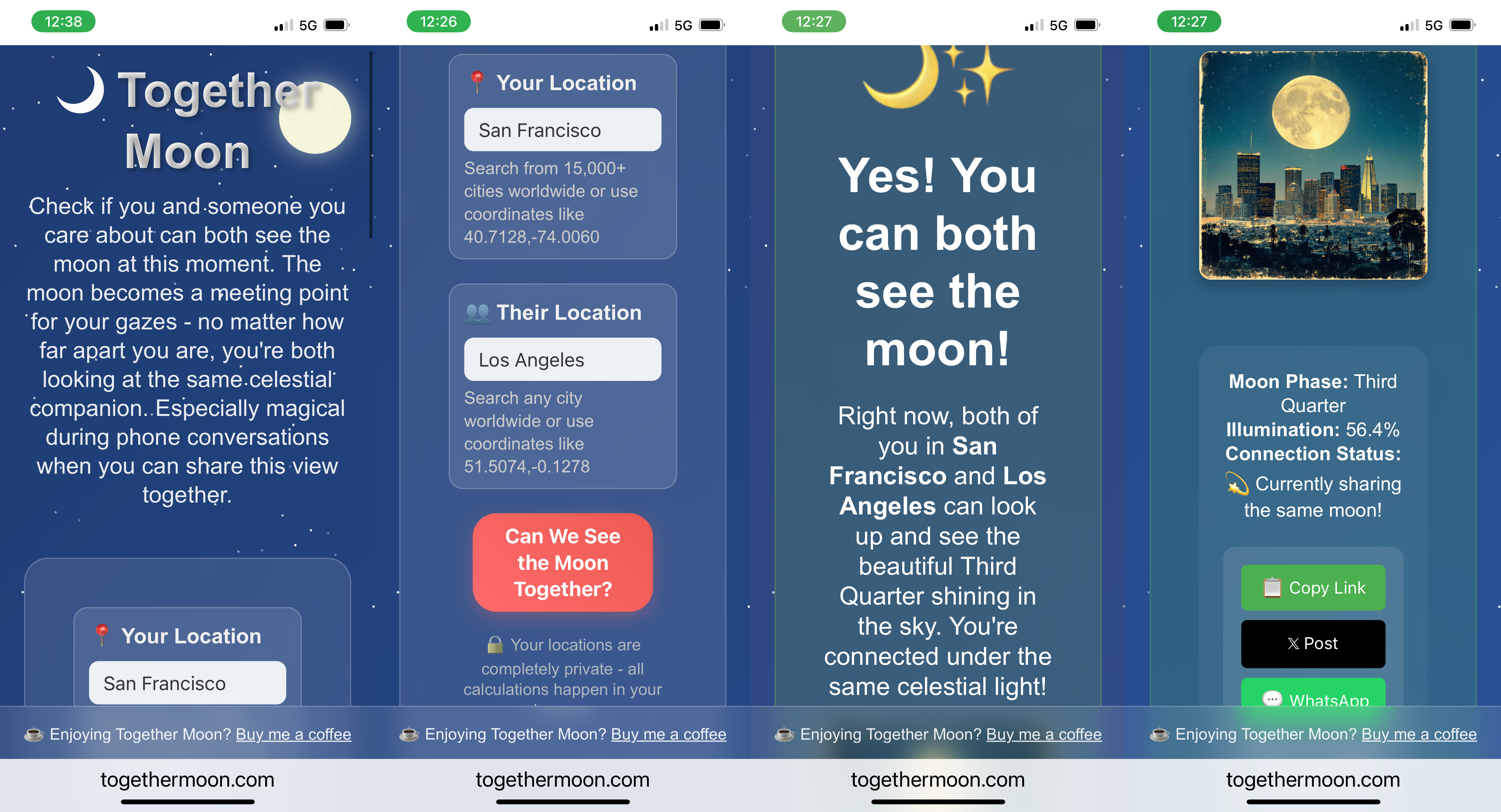TogetherMoon: When Distance Meets the Night Sky
Turning astronomical calculations into human connection
I've created TogetherMoon, a web tool that tells you whether you and someone you care about can both see the moon at any given moment. Born from personal experience — I've lived in Moscow, Singapore, New York, and now London, with parents abroad — I built this for those moments when you're on the phone with someone thousands of miles away and want to share something, anything, together.
The Science of Connection
The tool uses real-time astronomical calculations to determine moon visibility based on location and lunar position. But the magic happens when two people, separated by continents, realize they're both gazing at the same celestial companion. It transforms abstract orbital mechanics into intimate human connection.
Getting the astronomy right proved challenging. I initially tried various JavaScript libraries for astronomical calculations, but results were consistently off. I eventually settled on the Astronomy.js library, using Python's Skyfield library as ground truth to validate calculations. I ran simulations progressing time into the future with 10-minute granularity across several weeks to ensure the JavaScript and Python calculations agreed - because nothing breaks the magic quite like telling someone the moon is visible when it's actually below the horizon.

TogetherMoon in action: from location input to shared moon moments
Why Now Matters
With about one-third of US adults experiencing loneliness, people are finding creative ways to bridge distance. I already have visitors from across the US and Europe - people drawn to this simple way of feeling less alone under the night sky.
The timing couldn't be more relevant. Whether it's parents and grown children, grandparents and grandkids, or any family scattered by life's demands, the moon becomes a meeting point for shared wonder. It's astronomy as a love language, turning the vast loneliness of space into something that connects us rather than separates us.
Technical Decisions and Sharing
Privacy was paramount—the tool doesn't store locations or personal data. I intentionally deployed without a backend to reduce maintenance overhead and ensure user data never leaves their browser. All calculations happen client-side, making the connection feel more intimate and secure.
To encourage sharing, I added custom sharing links and used Stable Diffusion 3.5 Large to generate unique postcards for select city combinations. These AI-generated images capture the romance of shared sky-gazing, giving users something beautiful to share along with their moment of connection. I also added a timer feature that shows when the moon will next be visible if it's not currently visible for both locations - turning disappointment into anticipation.
The Human Element
Science serves humanity best when it bridges the gap between technical precision and emotional truth. TogetherMoon isn't just about lunar calculations - it's about finding ways to feel less alone in an increasingly connected yet isolating world. Sometimes the most sophisticated technology is the kind that disappears, leaving only the human connection it was built to enable.
The next time you're missing someone far away, perhaps you'll both look up and realize you're not as alone as you thought. The moon, after all, doesn't care about time zones — it just shines for anyone willing to look up and wonder.
Try it yourself at togethermoon.com